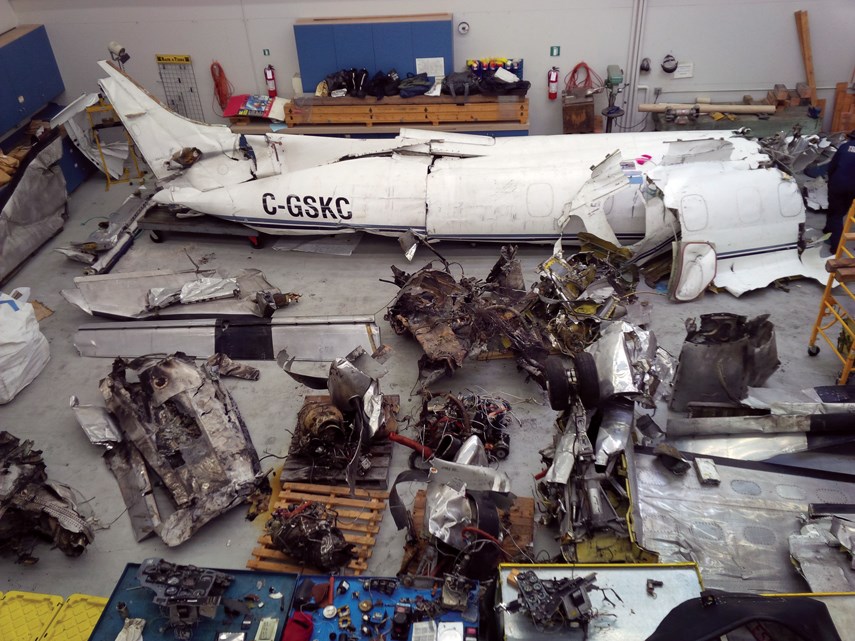Transportation Safety Board investigators say alcohol “almost certainly” was a factor in a 2015 plane crash that killed two pilots in the North Shore mountains.
The TSB released its final report on the Carson Air flight 66 crash Thursday morning, calling for the federal government and aviation industry to develop a comprehensive substance abuse program, including drug and alcohol testing for pilots and people in charge of passenger safety.
Carson Air’s Swearingen plane took off from Vancouver International Airport with a load of banking documents destined for Prince George just before 7 a.m. on April 13, 2015. Six minutes later the plane disappeared from radar over the North Shore mountains.
The investigation found the plane went into a nosedive and reached a speed of 400 knots (740 kilometres per hour), much faster than it is designed to go, causing it to break apart in the air.
Members of North Shore Rescue found the downed plane in densely treed, steep terrain not far from Coliseum Mountain that evening and recovered the bodies of the two pilots, Robert Brandt, 34, and co-pilot Kevin Wang, 32, the next day.
Toxicology results from the B.C. Coroners Service later confirmed the pilot, Brandt, had a blood alcohol level of 0.24 - three times the legal limit for driving.
“Meaning he had consumed a significant amount alcohol on the day of the occurrence,” said Kathy Fox, TSB’s chairwoman. Fox said once that fact was known, it became part of the investigation. “What we learned has nationwide implications.”
The TSB has found drug or alcohol impairment to be a factor in four plane crashes since 2009. It is illegal to fly with alcohol in your system but the industry relies on self-policing to enforce that.
Investigators arrived at three theories for what may have happened in the moments leading up to the crash but, because there was no flight data recorder or “black box” on the small plane, it is impossible to know with certainty, lead investigator Jason Kobi said.

The plane’s avionics system may have malfunctioned causing the pilots to become disoriented in the clouds, but there was no distress call and the descent was much steeper than would be typical in that situation, Kobi said.
Investigators also said it was possible that Brandt may have passed out in the cockpit and slumped forward toward the controls, but Kobi added, Wang should still have been able to regain control of the aircraft.
The last scenario they considered was that the crash could have been deliberate. Brandt’s autopsy showed he was a long-term, heavy consumer of alcohol.
“We know that there was a concern brought forward to the regional supervisor a month or so prior to the accident,” Kobi said. “That supervisor followed up with the pilots, was unable to detect any further indication for concern and the decision was made at that point to monitor the situation.”
Just three weeks earlier, Germanwings Flight 9535 was deliberately crashed into a mountainside by a suicidal pilot, killing 150 passengers and crew.
The TSB has repeatedly called for Transport Canada to make cockpit recorders mandatory to help find answers to questions in crash investigations. “The TSB is unable to confirm why the aircraft entered a steep dive leading to a subsequent in-flight break-up,” said Fox, calling that unsatisfying for all involved.
Carson Air released a statement welcoming the conclusion of the investigation. “The tragic events of that day will be forever in our minds,” it read. “Carson Air remains committed to working with the TSB and Transport Canada to prevent accidents such as this from happening again. Carson Air also fully supports the development and implementation of comprehensive substance abuse prevention legislation for Canadian air operators as recommended in the report.”



